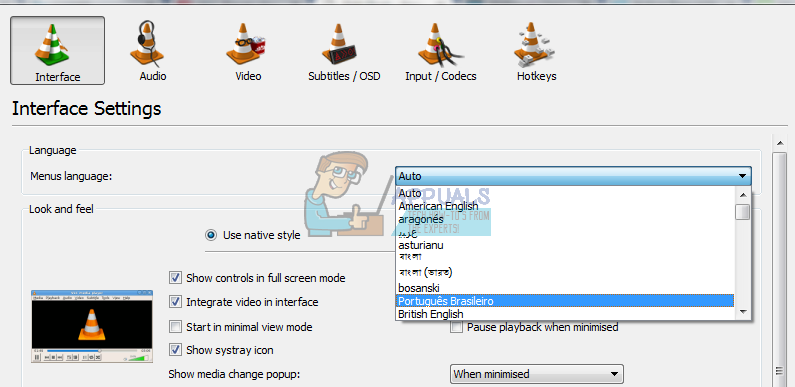How to Change the Language in VLC Player
VLC Media Player has become quite a popular media player. If no media player will play your file, then VLC will do it seamlessly. The interface is quite simple, appealing and user friendly. However, some things are bound to go wrong and the language preference is usually a culprit.
Users have tried installing and reinstalling VLC Media Player using the English language but when they open the media player, it is in some gibberish they cannot understand. In this article, we will explain why this happens and try to give you options for changing the VLC language to a preferred one.
Why does VLC Media Player still have another language even after being installed in English?
First, we must understand how VLC installation and language preference work. Upon installing the VLC media player for the first time, you will be asked to choose a language. This selected language is what the installation procedure will display the process in. If English is selected, the installation process will be displayed in English only. However, this does not affect the language of the interface/menu that will be used when you open VLC.
There is another language in VLC media player known as the menu language. This is the language displayed when you use VLC. By default, this language is set to ‘Automatic,’ so it will pick the system language, which is the language you have set on your PC. Some system languages do not significantly alter the Windows system unless the language definitions have been installed. Therefore, you might have an English interface, but your system language could be set to Arabic, Filipino, or German.
The VLC Media Player interface will automatically use the system language. If it has been set to Arabic, the interface will be in Arabic.
Another reason might be that the VLC Media Player installation file was customized for a certain language. The interface/menu will therefore display in this language despite your system language.
The methods below will be effective in solving the language preference issue.
Method 1: Change the language from the interface
If you can understand the language used on the VLC Media Player interface, here is a quick guide to change the language.
- Open VLC Media Player.
- Go to the Tools menu and click on Preferences, or press CTRL + P.
- Click on the interface tab/icon on the top left (should be selected by default).
- From the languages option, select the menu/interface language you prefer.
- Click save or hit enter.
- Close and Restart VLC. The effect should take place.

Method 2: Change the language using shortcuts
If you don’t understand the language being displayed, it might be a little tough. But we have a shortcut guide to help you through.
- Open VLC Media Player.
- Hit Ctrl + P to bring up the preferences window.
- Click on the left topmost icon (green and orange in colour).
The first dropdown text box that you see is the language’s dropdown menu.
- Click on the dropdown box and select your preferred language.
- Hit Enter.
- Close and restart the VLC Media Player for the effect to take place.
Method 3: Change your system language
Since VLC Media Player Language has been set to ‘Automatic’ by default, it will pick your system language. Change your preferred system language by following these steps:
- Press Windows/Start Key + R.
- Type ‘intl.cpl‘ into the run text box, then hit enter. The system’s ‘Region and Language’ options window will come up.
- In the format/language dropdown box, select your preferred language e.g. English (United Kingdom).
- Restart your PC for the changes to take effect.
Your VLC should now be able to mimic the system language if the language preference has been set to ‘Automatic’.